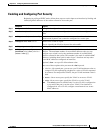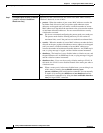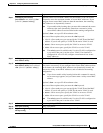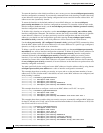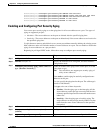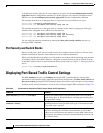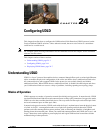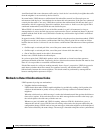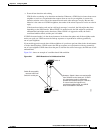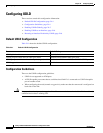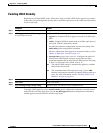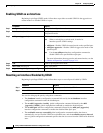
CHAPTER
24-1
Catalyst 2960 and 2960-S Switch Software Configuration Guide
OL-8603-09
24
Configuring UDLD
This chapter describes how to configure the UniDirectional Link Detection (UDLD) protocol on the
Catalyst 2960 and 2960-S switches. Unless otherwise noted, the term switch refers to a standalone
switch and to a switch stack.
Note For complete syntax and usage information for the commands used in this chapter, see the command
reference for this release.
This chapter consists of these sections:
• Understanding UDLD, page 24-1
• Configuring UDLD, page 24-4
• Displaying UDLD Status, page 24-7
Understanding UDLD
UDLD is a Layer 2 protocol that enables devices connected through fiber-optic or twisted-pair Ethernet
cables to monitor the physical configuration of the cables and detect when a unidirectional link exists.
All connected devices must support UDLD for the protocol to successfully identify and disable
unidirectional links. When UDLD detects a unidirectional link, it disables the affected port and alerts
you. Unidirectional links can cause a variety of problems, including spanning-tree topology loops.
Modes of Operation
UDLD supports two modes of operation: normal (the default) and aggressive. In normal mode, UDLD
can detect unidirectional links due to misconnected ports on fiber-optic connections. In aggressive mode,
UDLD can also detect unidirectional links due to one-way traffic on fiber-optic and twisted-pair links
and to misconnected ports on fiber-optic links.
In normal and aggressive modes, UDLD works with the Layer 1 mechanisms to learn the physical status
of a link. At Layer 1, autonegotiation takes care of physical signaling and fault detection. UDLD
performs tasks that autonegotiation cannot perform, such as detecting the identities of neighbors and
shutting down misconnected ports. When you enable both autonegotiation and UDLD, the Layer 1 and
Layer 2 detections work together to prevent physical and logical unidirectional connections and the
malfunctioning of other protocols.



